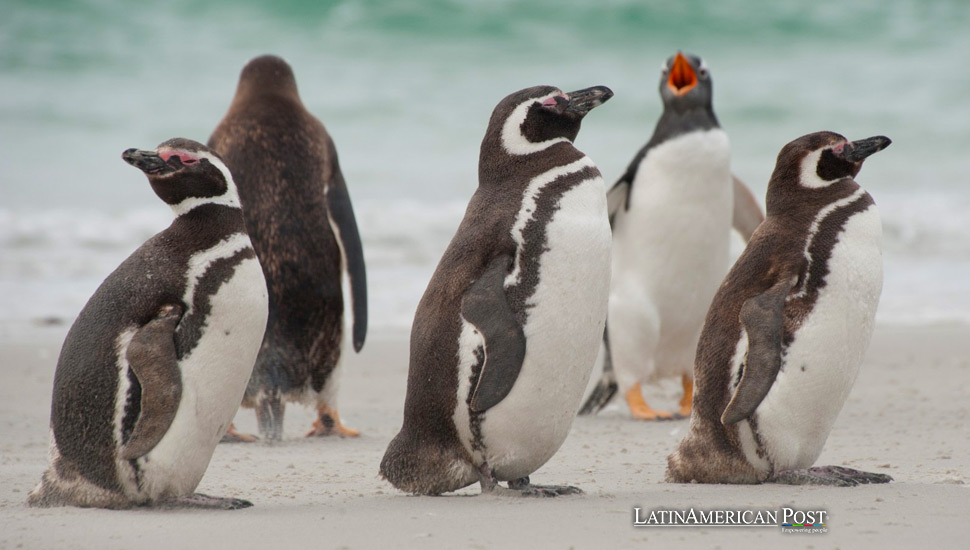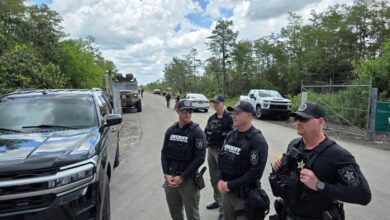Avian Crisis: Bird Flu Threatens Latin America’s Wildlife

The confirmation of avian influenza among penguins in South Georgia sends shockwaves across Latin America, where diverse ecosystems and unique species now face heightened risk. As the virus encroaches, scientists race against time to safeguard the continent’s precious wildlife.
A Threat on the Horizon
In the vast expanse of the Southern Ocean, amidst the rugged beauty of South Georgia, a remote sub-Antarctic island, an ominous threat looms over its remarkable wildlife. Bird flu, a relentless force spreading across the globe, has breached the island’s defenses, striking fear into the hearts of conservationists and scientists alike. But its implications extend far beyond the icy shores of South Georgia, resonating deeply with the diverse ecosystems and unique species that define Latin America’s natural heritage.
Latin America, celebrated for its breathtaking landscapes and unparalleled biodiversity, is on high alert as avian influenza infiltrates its borders. From the towering Andes to the lush Amazon rainforest, countless bird species face the looming specter of this deadly virus. The consequences could be catastrophic for individual species and entire ecosystems that rely on the delicate balance of nature.
South Georgia is a sanctuary of unparalleled beauty and a haven for wildlife. To witness bird flu take hold here would be a global conservation tragedy.
Tracing the Spread
The avian flu virus’s journey through Latin America raises pressing questions about its origins and spread. Scientists point to wide-ranging seabirds like skuas and giant petrels, which are likely carriers in winter along the South American coast. With their natural scavenging behaviors, these birds inadvertently serve as vectors, bridging the gap between continents and bringing the virus closer to home.
For Latin America’s iconic wildlife, the threat of avian influenza is both immediate and existential. The interconnectedness of migratory birds and the potential for a cascading crisis forces action to protect our precious biodiversity.”
The Galapagos Islands, a UNESCO World Heritage Site renowned for its unparalleled biodiversity, stand at the forefront of this looming threat. The archipelago’s unique bird species, including its famed penguins and flightless cormorants, are particularly vulnerable. If the virus reaches these distant shores, the consequences could be devastating, reverberating across the entire ecosystem.
Race Against Time
As the virus inches closer to the Antarctic Peninsula, where Argentine scientists recently detected infected bird carcasses, the race to mitigate its spread intensifies. Scientists across Latin America are bolstering surveillance efforts, closely monitoring bird populations for any signs of infection. The penguin colonies in South Georgia serve as a critical test case, offering valuable insights into the virus’s transmission dynamics and its potential impact on other species.
But amidst the urgency and uncertainty, there is hope. The Antarctic tourism industry, a vital economic lifeline for southern Chile and Argentina, is strengthening its efforts to protect these fragile ecosystems. Cruise operators, in collaboration with organizations like the International Association of Antarctica Tour Operators (IAATO), are implementing stringent biosecurity measures to minimize the risk of contamination.
Also read: Winged Wonders: A Birdwatching Odyssey in Latin America
As Latin America braces for the looming threat of avian influenza, the stakes have never been higher. The continent’s rich tapestry of wildlife and ecosystems hangs in the balance, awaiting decisive action to ensure its survival in adversity.





